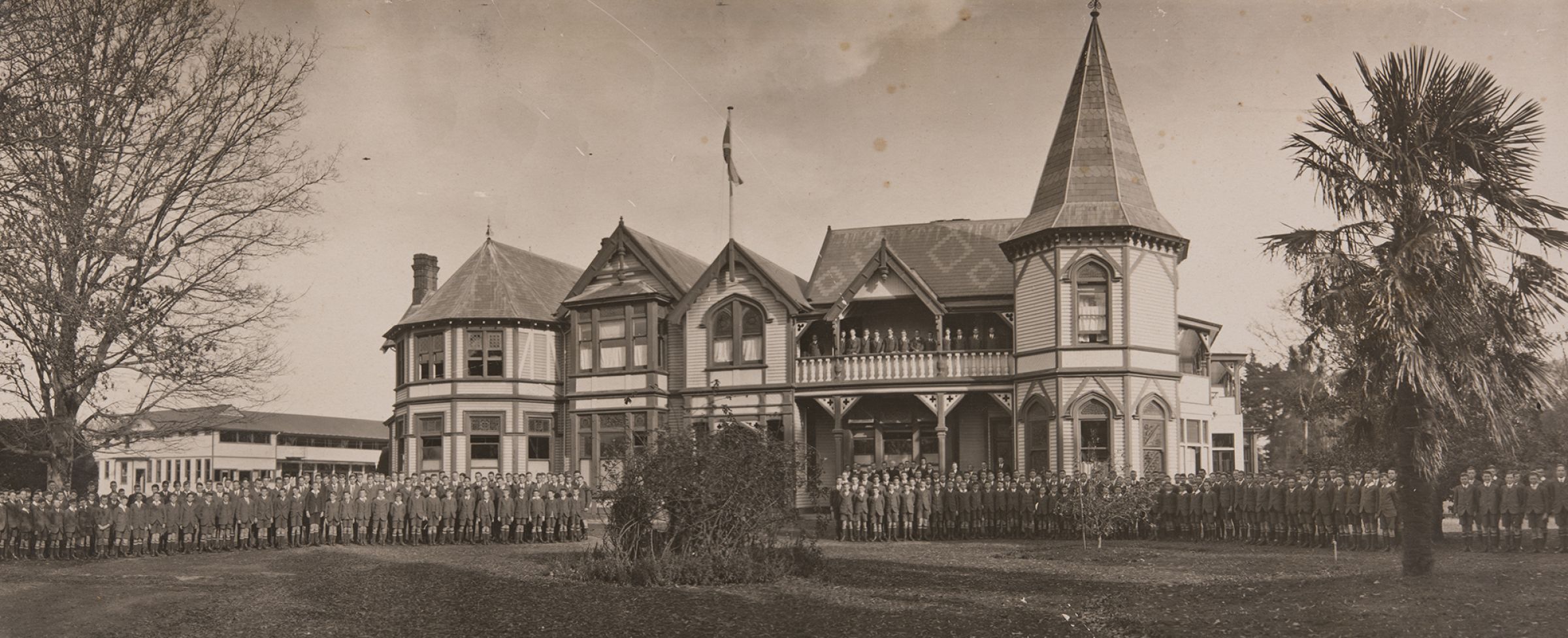
Our Heritage
Taonga Tuku Iho
St Andrew’s College was founded in 1917 in the Scottish Presbyterian tradition of the Christian faith. The values of our forefathers held dear remain strong and true today. We celebrate our faith, traditions, achievements and individual strengths which bind us together as a caring community, and connect us to our past, our present and our future.
Our Heritage
We take great pride in our long history, firstly as a prestigious independent boys’ school, then since the early 1990s, as the only independent co-educational school in the South Island offering a world class education from Pre-school through to Year 13. During the 1980s girls entered St Andrew’s in the Preparatory School, and in 1991, a decision was made by visionary Rector, Dr John Rentoul, and the Board of Governors to allow girls to enrol in the Secondary School. Today it is both the ‘sons’ and ‘daughters’ of St Andrew’s who bring life and a special spirit to the College campus.
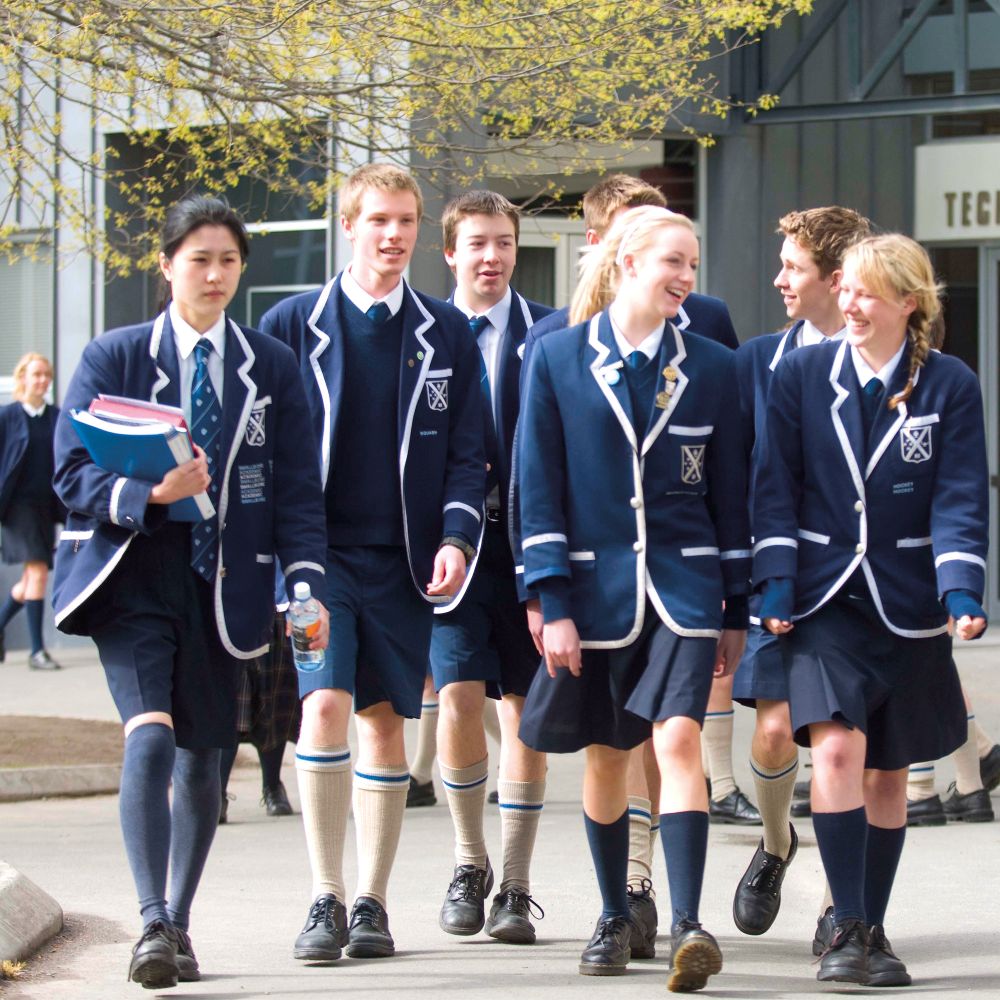
Our Founder
The College’s founder was Rev. Alexander Thompson, an exceptional orator, scholar, fundraiser and visionary, who served the British and Foreign Bible Society in New Zealand and Australia for 20 years and was instrumental in setting up the Flying Doctor Service. His driving ambition was to ‘educate the sons of the Presbyterian and Scottish community of Canterbury’, and – due to his determination – St Andrew’s College opened its doors in Christchurch in 1917, with 19 boys and four teachers.
In late 1917, the fledgling St Andrew’s College Board purchased ‘Strowan’, the magnificent property which is still home to the College today. Its centrepiece, the gracious and fully restored Strowan House has overseen all the comings and goings at St Andrew’s over its long history and is a well-loved and highly recognisable landmark on the College campus.
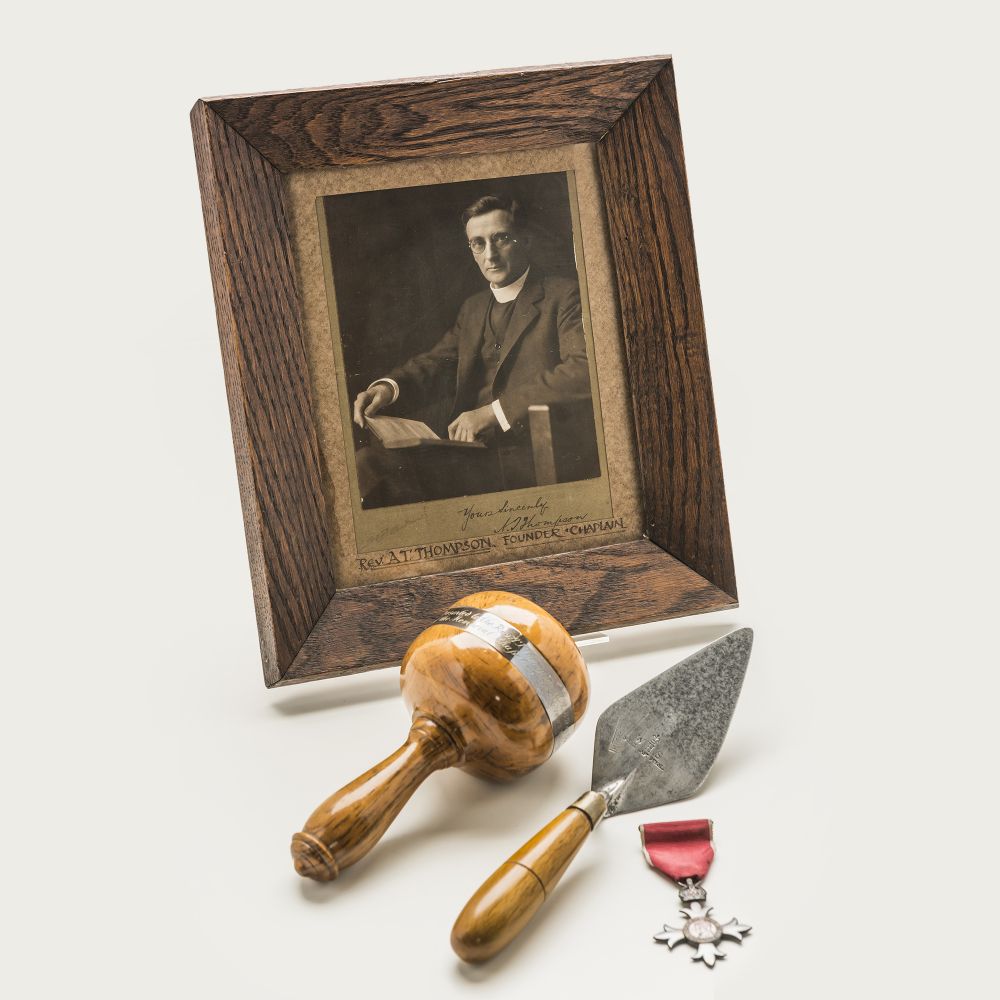
Our Traditions
Scottish Presbyterian traditions remain at the heart of St Andrew’s, with the skirl of the pipes, twirl of the Highland dancers, the Ferguson tartan, St Andrew’s cross and Scottish thistle intrinsically woven into the fabric of College life. We celebrate our early visionaries at our annual Founders’ Day celebrations, hosting our own version of the Highland Games.
Watch a clip of the 2024 Highland Games >
Watch the Address to a Haggis at the 2025 Founders’ Day Assembly >
The College song was written in 1925 by T A Stuart-Menteath, a member of staff. It tells the legend of the monk Regulus bringing the relics (bones) of the disciple Andrew from Greece to Scotland, and of how the stories of Saint Andrew and the faith of the Scots who honoured him have inspired Christians through the ages.
The College tartan is the Fergusson tartan, as the Pipe Band got its first kilts in 1924 when General Sir Charles Fergusson was the Governor-General. Prefects dress formally in kilts, cutaway jackets and sporrans for Friday assemblies.
The links and shared values and traditions of St Andrew’s College and St Andrews in Scotland will be forever celebrated in the magical Antependium designed and developed for the Centennial Chapel by Professor Malcolm Lochhead of Glasgow.
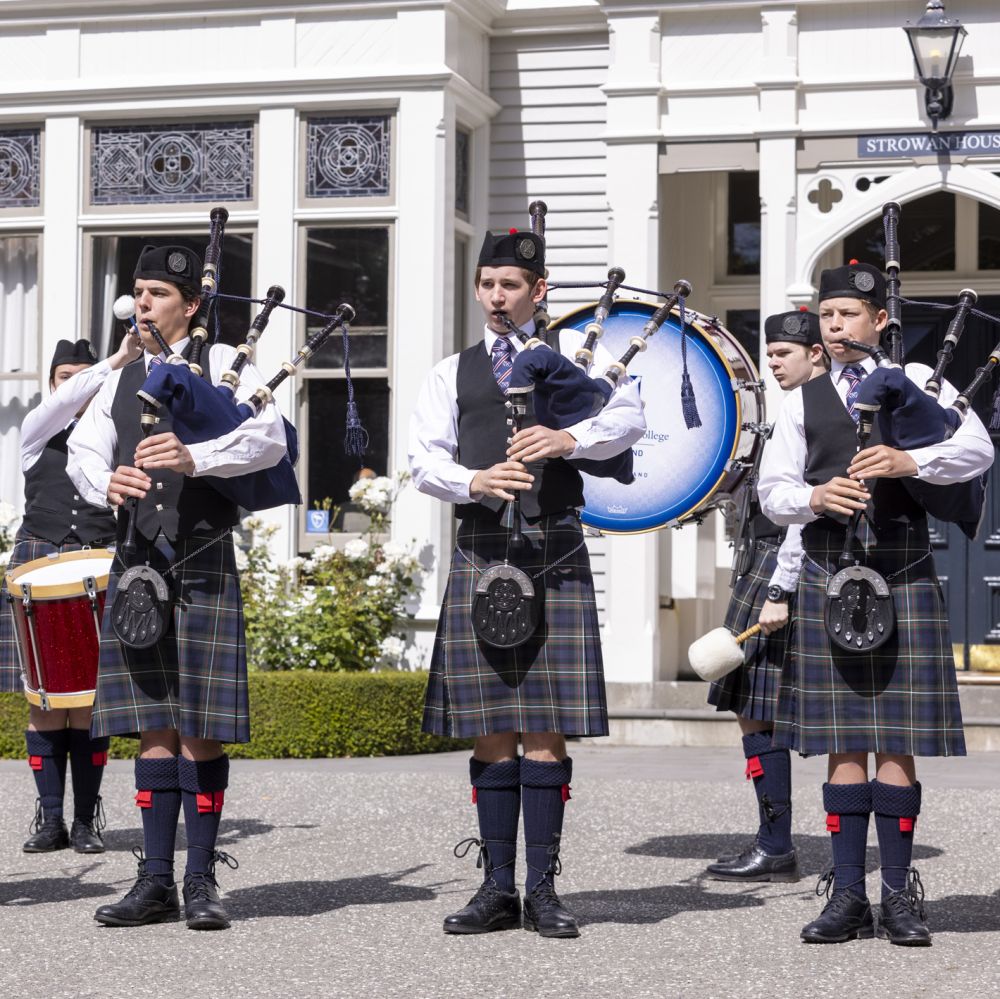
The iconic Strowan House
Strowan House is a striking and familiar landmark shared by every single student who has passed through the St Andrew’s College gates. During its long history, the gracious homestead has borne witness to nearly all of the comings and goings at the College and has fulfilled many purposes.
Before it became the jewel of the crown at St Andrew’s, Strowan House started life as a simple weatherboard farmhouse, built in the mid-19th century. Among its owners were a Victorian baronet, Scottish lawyer, and prominent Edwardian businessman, George Stead, who purchased Strowan in 1890, and transformed it into a grand gentleman’s residence, befitting his growing status in the Canterbury community.
It was thanks to a series of fortunate events, along with the determination of College founder, Rev. A T Thompson, that the St Andrew’s College Board was able to secure the purchase of the Strowan property from Stead in 1917. Rev. Thompson and his friend, Charles McCrostie, had been ‘wooing’ parishioners and gathering small donations. A generous £5000 bequeath from North Canterbury runholder, Duncan Rutherford, coincided with the Stead family putting their property ‘Strowan Park’ on the market. St Andrew’s College found its home.
The first major task for Rev. Thompson and the Board was to turn the palatial residence into an operable school, ready for the start of Term 1, 1918. A small army of tradespeople completed considerable works over the Christmas holidays, with Strowan’s 20 rooms transformed for use as staff and boarders’ accommodation and classrooms.
The highly decorative billiard room (currently the staffroom) became the Assembly Hall, and a room next door became the first classroom. The former drawing room (now the Rector’s Study) and another small room were also converted into classrooms. The boarders slept in dormitories which had been created upstairs and had their meals in the downstairs dining room. The first Rector, Sydney Dickinson, and his family lived behind the kitchen area, with the domestic staff overhead. The stables were transformed into the College’s first Science laboratory.
There were tough times throughout the College’s first year at Strowan, with World War I still raging in Europe, a rapidly growing roll putting pressure on classroom facilities, rudimentary dormitories for boarders providing barely adequate accommodation during a freezing winter, and the outbreak of Spanish flu.
The 1919 school year began with enrolments of 112 – six times more than St Andrew’s had started with in 1917. The accommodation crisis was solved by the construction of an additional classroom, and Dorm 6, an upstairs open-air boarders’ dormitory, which stretched along the west side of the building. A canvas blind was let down at night, providing scant protection from wind and rain. A further eight new rooms were added to house the Headmaster’s family and domestic staff.
During the early decades of the College’s history, many boarders completed their schooling while living in Strowan House. It was their home, as well as their place of learning, alongside the day boys. By 1930, when many more buildings, including classrooms and boarding facilities had been established on campus, only the senior boarders remained living in Strowan House, many in the infamous Dorm 6.
Over time, additions to the house slowly changed its facade. Bits were added on, rooms were altered, walls removed, and internal corridors meandered through the spaces.
The Rectors and their families lived onsite in Strowan House until the late 1950s, when the College purchased a Rector’s residence in College Avenue. At this time many of the rooms in Strowan House were converted from classrooms back to reception rooms, meeting rooms, and offices.
Rector Christine Leighton has often reflected on the history of her office, the magnificent Rector’s Study, which was a drawing room when Strowan was a private residence, and has also served as a classroom, Library, and Boardroom at St Andrew’s College.
St Andrew’s College without Strowan House is an unimaginable thought, however, there was a risk she could have been lost forever during the Canterbury earthquakes. The building was extensively damaged in the September 2010 earthquake, which worsened during the major aftershocks of 2011. As a result, the building underwent a significant 18-month restoration to bring it up to today’s engineering and safety standards. It was a very complex process, given the 25-room building was in fact in five separate structures, each built in different periods and requiring specific structural solutions. Included in the works was the removal of the original lath and plaster walls, which were replaced with braced plywood, and the painstaking restoration of Strowan’s ornate plasterwork and stained-glass panels.
Following the restoration, Strowan House is once again a busy hub for the Rector, Senior Management, teachers, various administrative and support teams, and of course the boarders. They are well catered for in the character-filled dining room, which also remains the venue for many events and traditional celebrations at the College.
The ‘grand lady’ is back to her brilliant best and continues to play a hugely important role at St Andrew’s College. Within her walls is contained incredible history, memories of staff and students from across the generations, and likely a great many secrets. And with her stronger and brighter than ever, Strowan House is poised to remain the College’s most significant building for another 100 years.
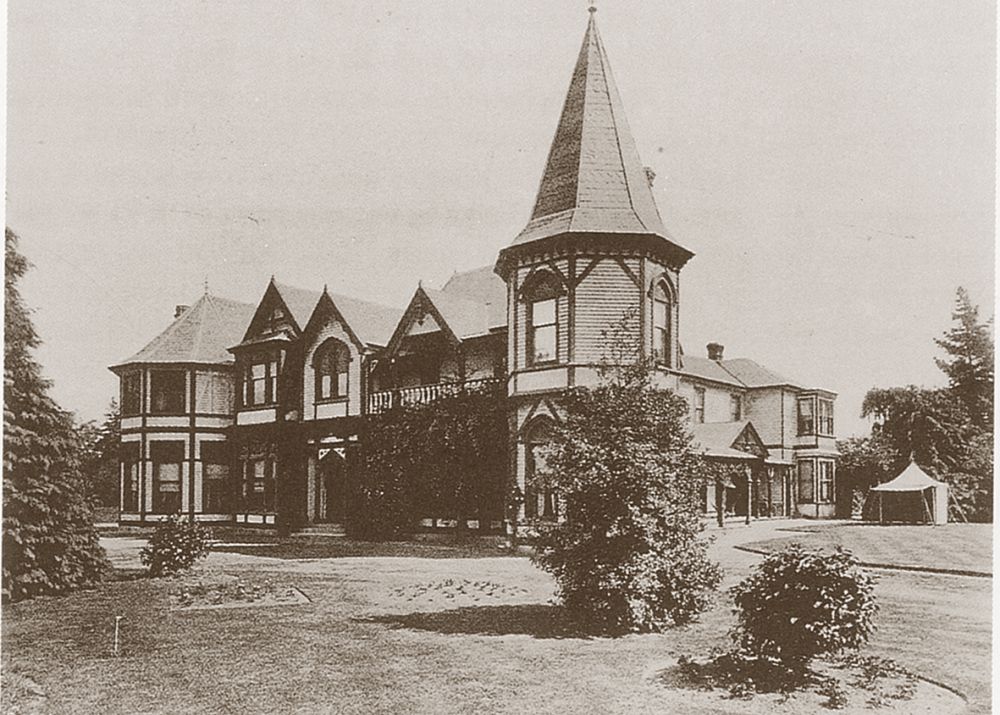
Our Museum
We believe that understanding our past helps us to appreciate our present and shape our future. Our Museum is home to the College’s history and traditions, as well as being a place to engage with College culture, and a source of pride for the College community.
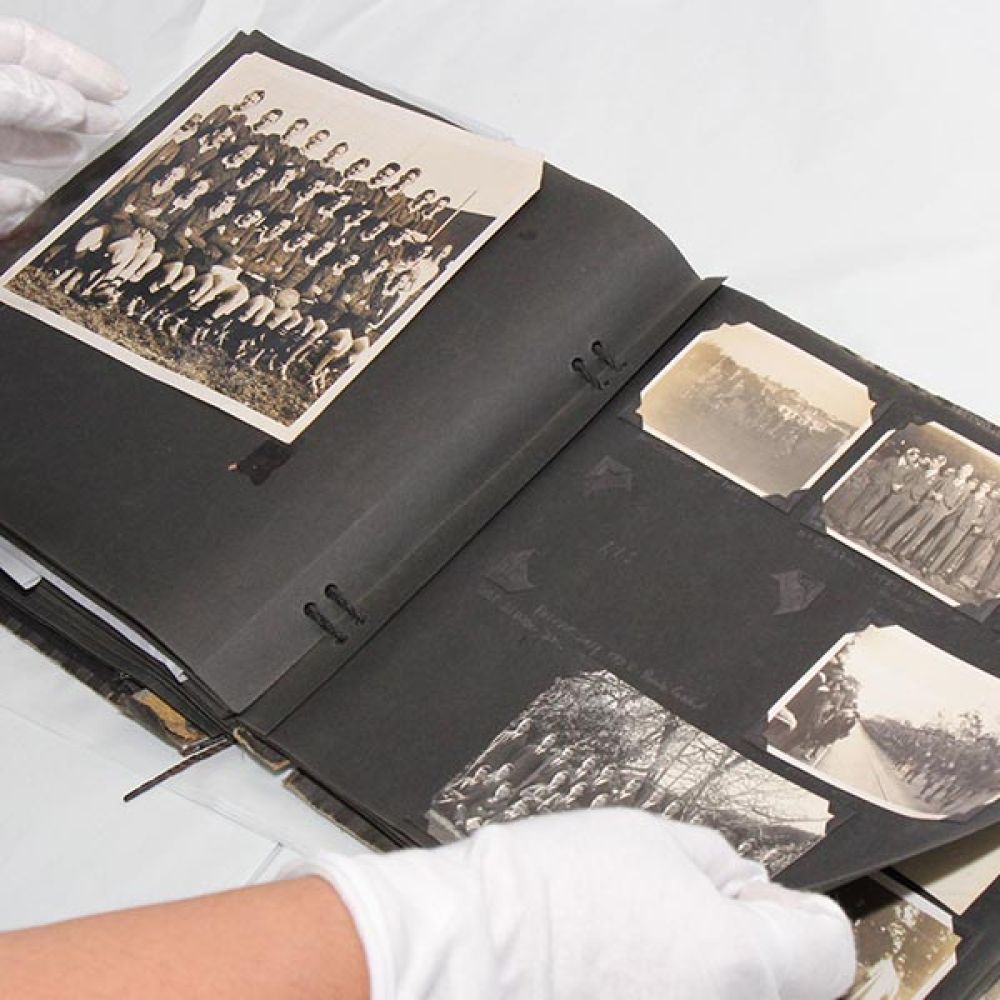
Our Earthquake Story
The earthquakes of 2010 and 2011 changed the face of Canterbury and its people forever. St Andrew's College did not escape the trauma of this experience, but alongside the distress and the pain, we also grew stronger.
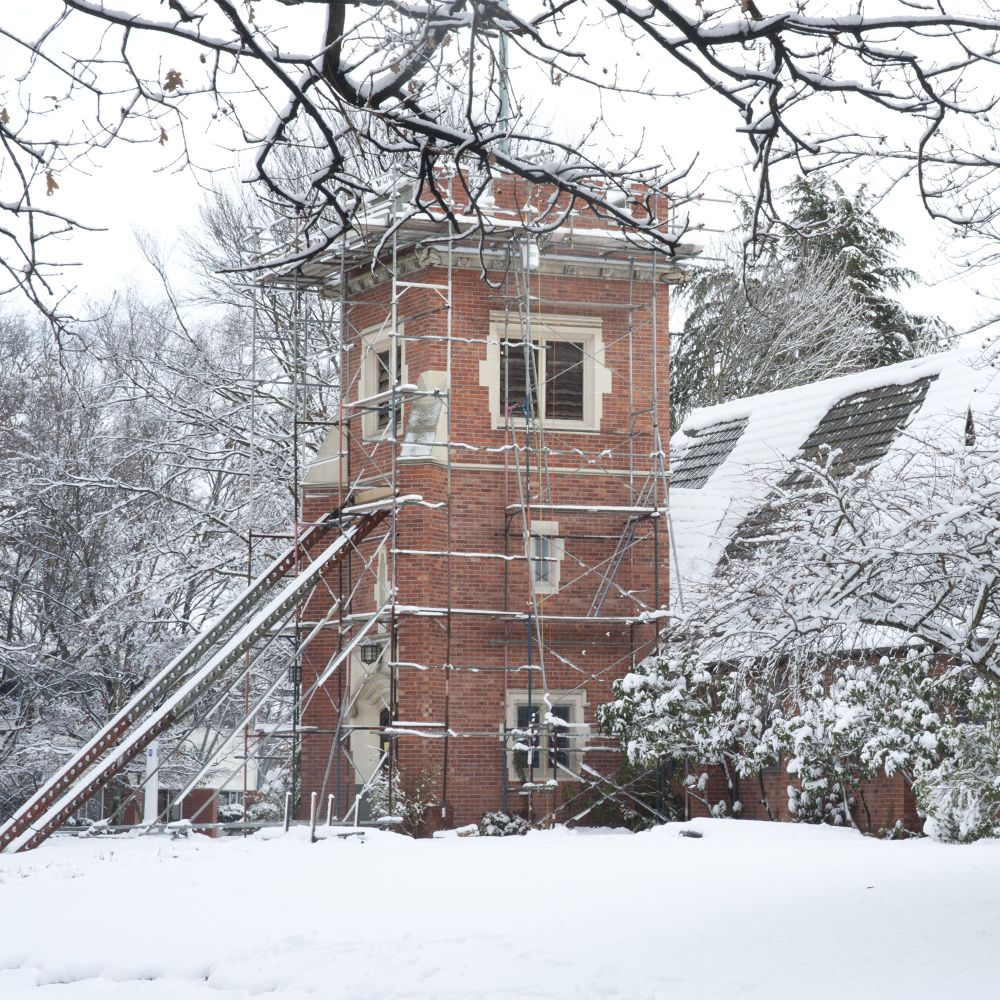
Celebrating 100 Years
During 2017, St Andrew’s celebrated its Centenary with a wonderful year of celebrations and events which captured the special spirit and culture of the College. The Spirit of St Andrew’s, a beautiful coffee table book, was written for our Centenary year.
A timeline exhibition showcasing 100 years of StAC history was unveiled as part of the Centenary Launch in 2016. The StAC100 timeline is installed in the Rentoul Senior College atrium and provides a fascinating visual representation of the history of St Andrew’s College alongside major national and international milestones and events that have shaped the course of the last 100 years.
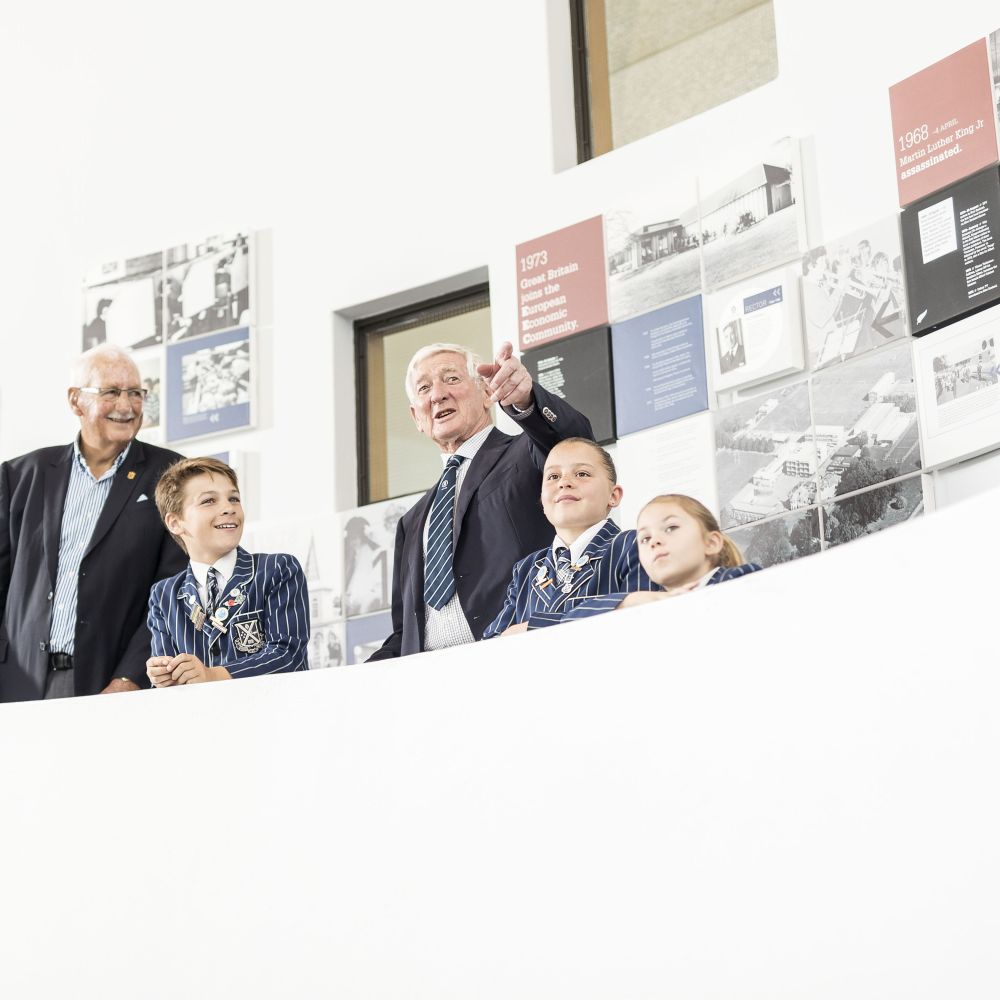
Centenary Film
– Spirit of St Andrew's
Premiering on Saturday 18 March 2017 during our Centenary Gala Weekend, the Centenary film Spirit of St Andrew's was produced by Old Collegian Rick Harvie from Belmont Productions and is a visual time capsule that showcases 100 years of St Andrew's College history.
Helping to tell the story of the College are interviews with a variety of Old Collegians, current staff members and members of the wider St Andrew's College community. While there is a strong focus on the contemporary College, it is important to look back and explore the College's roots, and the men and women who secured the College's legacy.
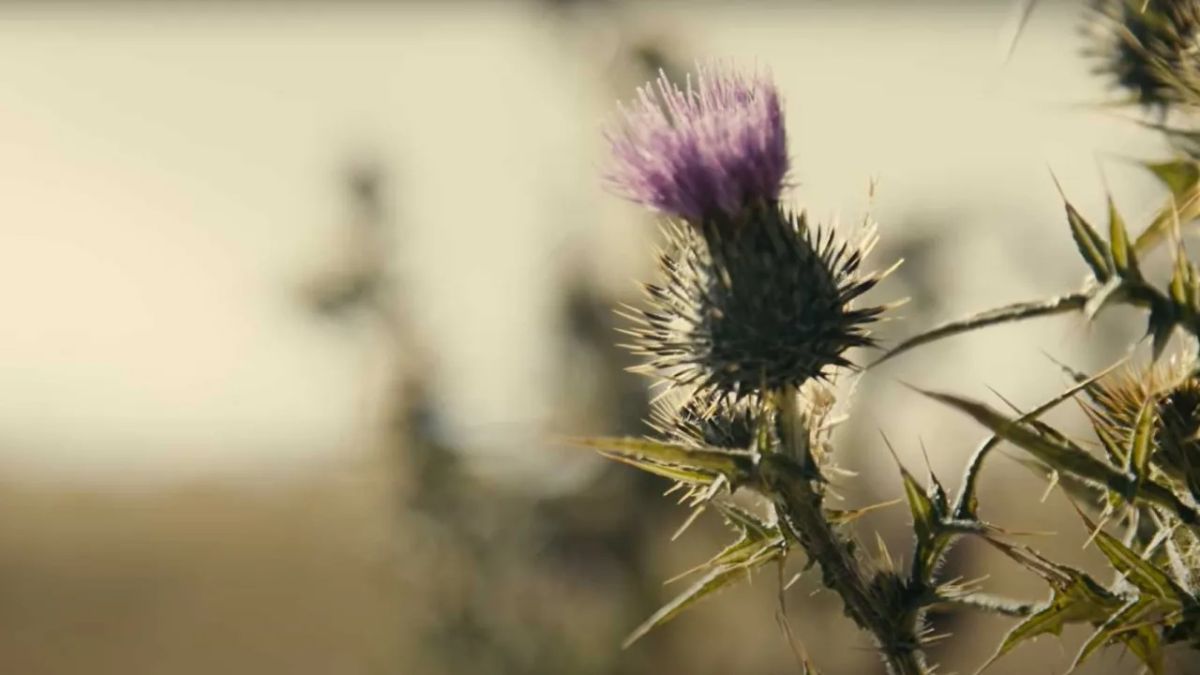
Centenary Vintage Newsreel
Voiced by then student, Nic Cain, this newsreel takes a look at some of the special moments in the College’s 100-year history, without taking itself too seriously. It was originally shown at the Centenary launch on 16 September 2016.
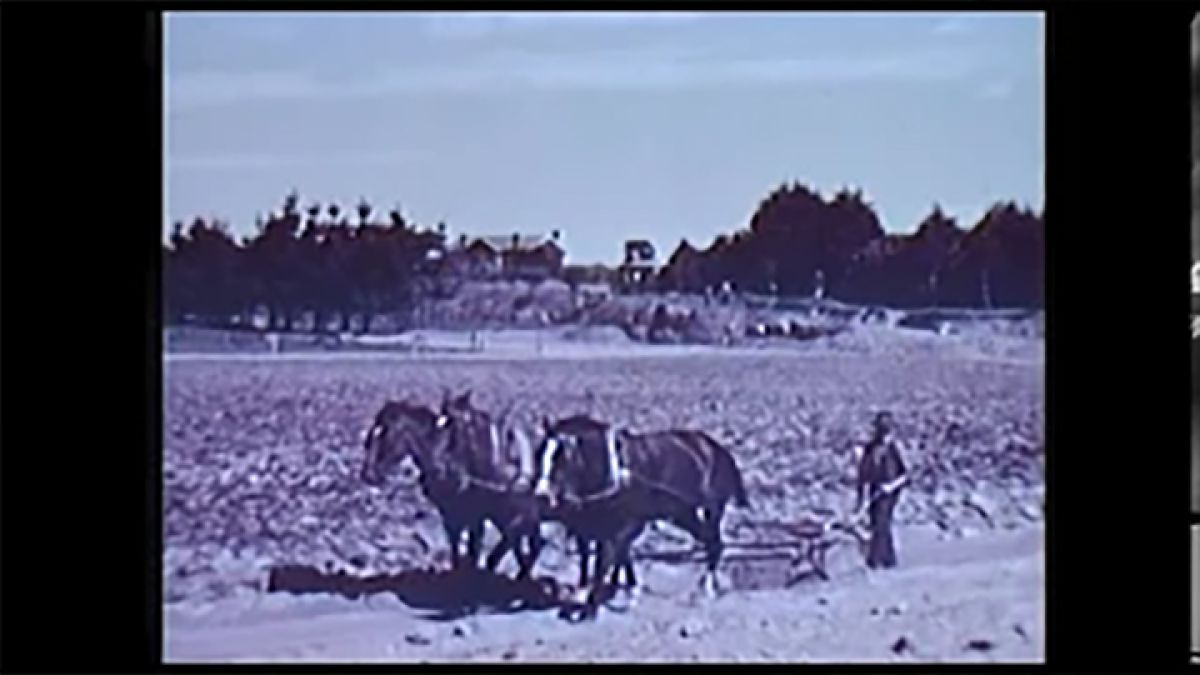
100 Years of Community Group Support
The Events Committee, Ladies' Circle, Old Collegians Association and PTA are key community groups who have generously supported the College throughout our first 100 years—and continue to do so.
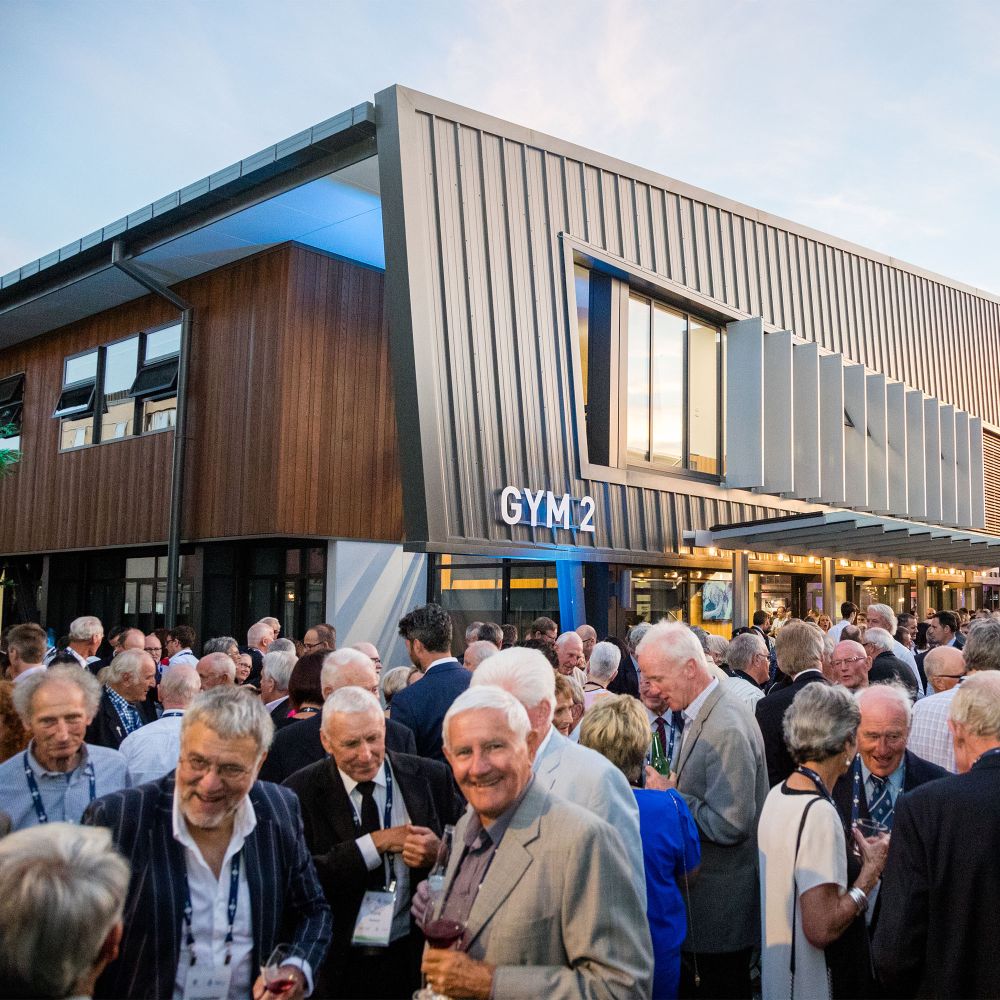
Centenary Sports Wall
The Centenary Sports Wall is located in the spectator gallery of Gym 2.
Created in 2017, the wall is covered with hundreds of team photos from 1917–2017 and students, Old Collegians, and current or former permanent members of staff who were either top level national title holders or represented an open grade/ultimate team; were an athlete or part of the official team at the Commonwealth Games, Open Grade World Championships or Olympic Games; or represented another nation at sport.
Based on the theme ‘from the ordinary comes the extraordinary’ the wall is designed to be ongoing and will be updated as more people qualify for inclusion, or those already named, add to their achievements. The Centenary Sports Wall is complemented by a slideshow expanding on each person’s sporting record.
Of the talented sportspeople to appear on the Centenary Sports Wall in 2017, 66 are Old Collegians, four are current students and 19 are ex or current staff. St Andrew’s is very proud of its 15 Olympians, including three gold medal winners: Athol Earl for rowing, Peter Mander for yachting, and Barry Maister for hockey. Five people on the Centenary Sports Wall have received honours from the Queen for Services to Sport.
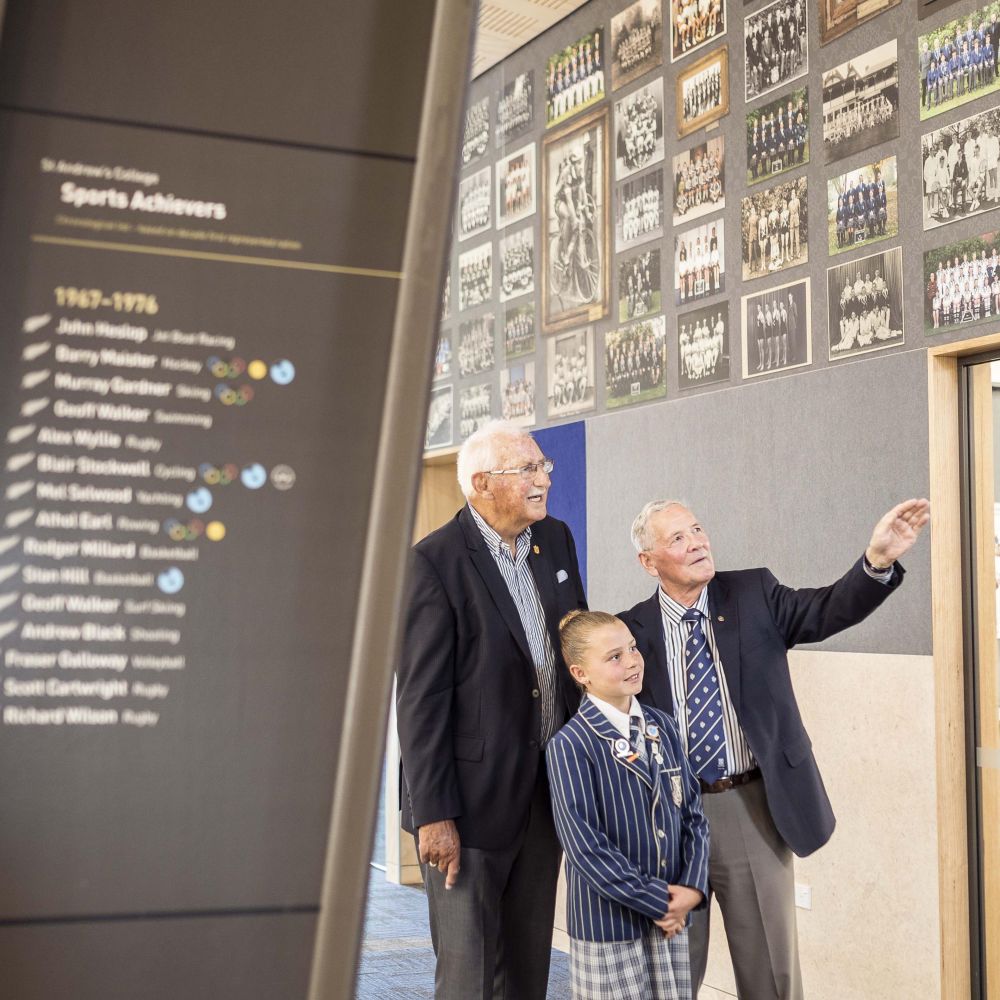
Pipe Band Centenary
The Pipe Band celebrated its Centenary during Founders' Day weekend on Friday 15 and Saturday 16 March 2019. Due to the tragic Christchurch mosque shootings on the Friday, the planned events were revised accordingly.
Ben Murray (OC 2013), former Pipe Major of the St Andrew’s College Pipe Band, delivered the Founders' Day address at assembly. His message of his experience of what the worldwide Pipe Band community had given him, and the importance and opportunity of 'community' to our own well-being, became even more relevant within a few hours of his speech.
Over 500 people gathered in the Centennial Chapel on Saturday morning, and after a time of reflection about the previous day’s events, the history of the band was presented by the Board Chair Bryan Pearson, Rector Christine Leighton, and Pipe Band Director Richard Hawke. Preparatory School Art teacher and College Archivist, Pip Dinsenbacher, compiled an excellent account of the prominent people and events that have highlighted the band over its 100-year history. This has also been compiled into a Pipe Band history book, The Road to Success.
Also honoured at this event were former band members from the 2013 World Championships winning band. Seventeen of the 32 band members were present to receive a gift from former Band Master, Barry Shaw. Iona Taylor (OC 2019 – a bass drummer in the Pipe Band) sung The Skye Boat Song, Solo piper, Campbell Wilson (OC 2020) played a tribute to GAM Hilson. Hilson's son Euan Hilson (Pipe Major 1953–54) and Pipe Major, Noah Clarke (OC 2019), cut the Centenary cake. The St Andrew's College March was played accompanied by Michael Lawrence on organ to conclude this very special occasion. After photos, a Mass Band in the Quad concluded the morning events.
The Centenary celebrations concluded on the Saturday evening with an excellent concert, featuring current and former band members, and highland dancers, and a Ceilidh (traditional Scottish dance).
You may be interested in the following articles ...
Pipe Band celebrates 100 year milestone
Pipe Band Centenary – A time for reflection and commemoration
Centenary Concert and Ceilidh conclude celebrations
Pipe Band’s rich history
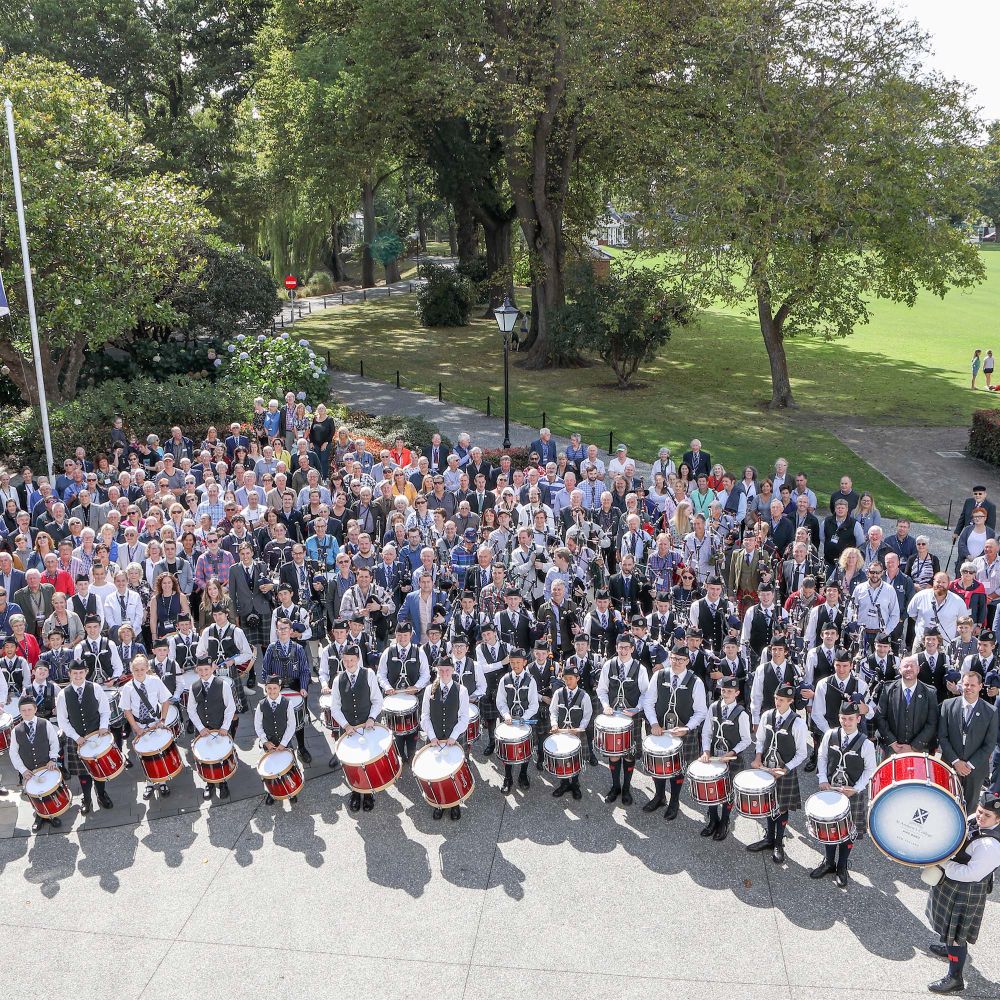
Our Whakataukī
He waka
eke noa
We are all in this together
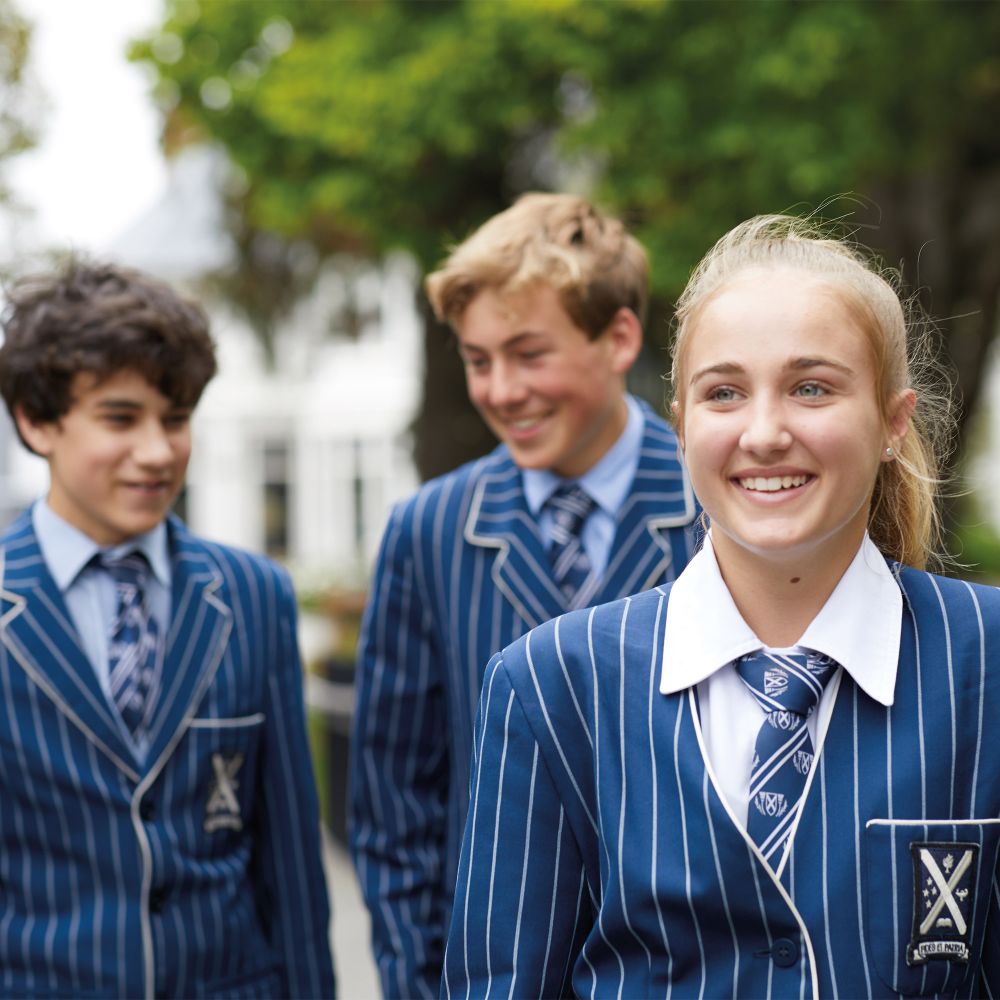
Life is Co-ed

Our Vision and Spirit
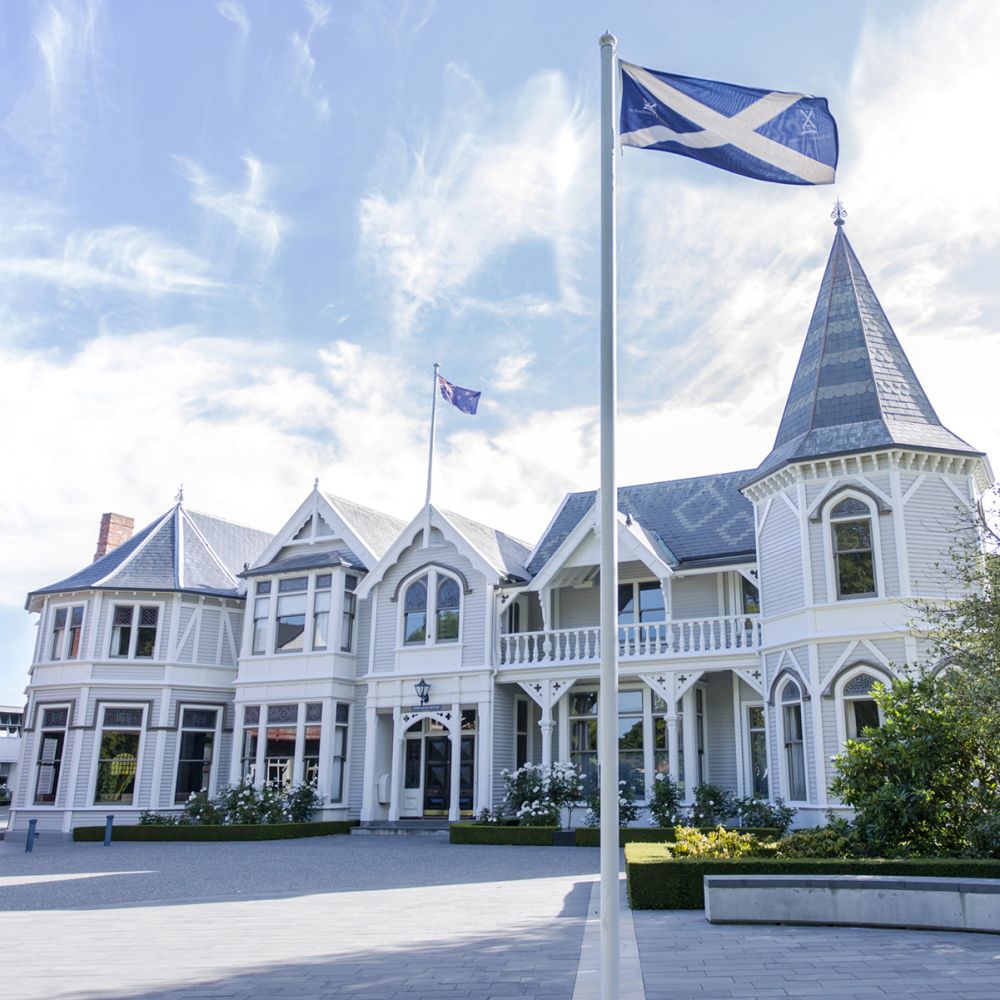
Our Campus
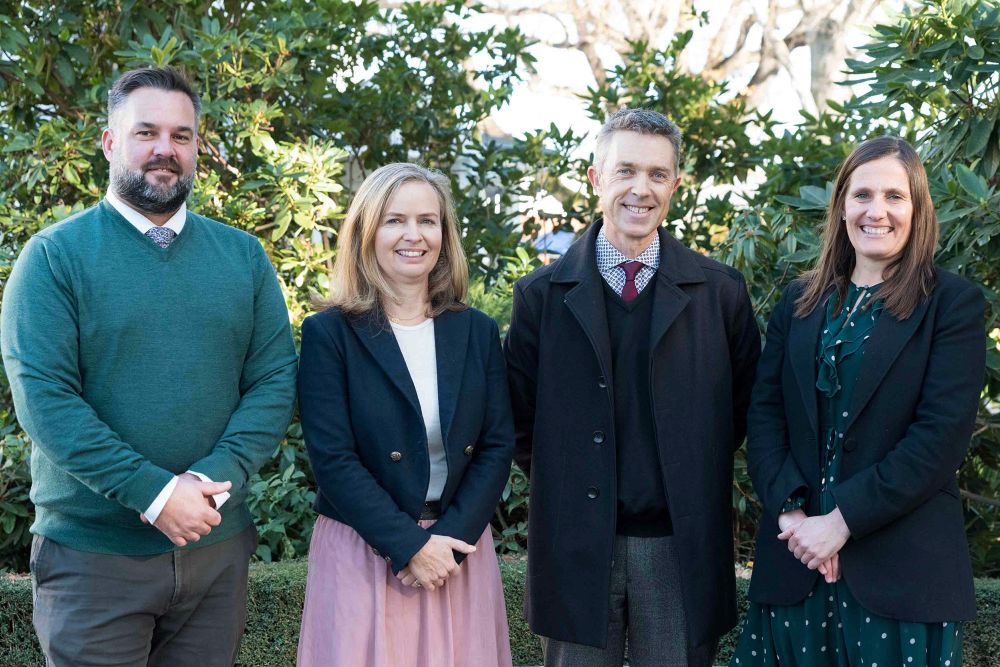
Our People